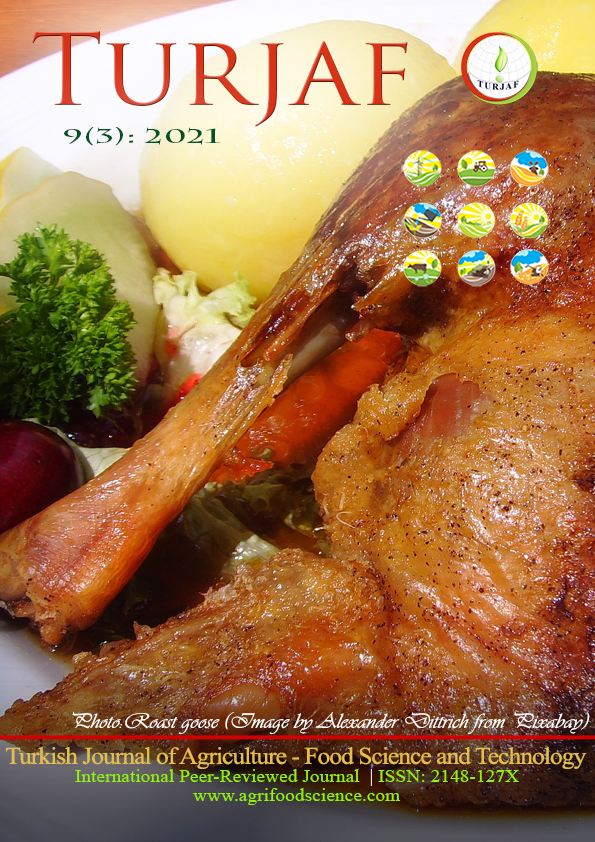Determination of Some Properties of Tiramisu Produced with Kalaba Yogurt
DOI:
https://doi.org/10.24925/turjaf.v9i3.493-497.3872Keywords:
Gastronomy, Local product, Kalaba yogurt, Physicochemical property, TiramisuAbstract
The interest in traditional foods, which have an important place in Turkey, is increasing day by day. Traditional products are also important gastronomy elements in the Cappadocia region, which is the center of attention by tourists. Production and promotion of local dairy products are also important in this regard. Among these dairy products, Kalaba yogurt which is known as different names according to the region is produced in Kalaba town, Avanos district of Nevşehir in the Cappadocia region. It is thought that the product will increase the value of the product in terms of gastronomy by researching the characteristics of the yoghurt, which has remained specific to the region, and adapting to the recipes. Tiramisu, one of the best-known desserts of Italian cuisine, is a dessert type prepared with mascarpone cheese in its original recipe and labne cheese in alternative recipes. In this study, it was aimed to investigate the possibilities of using Kalaba yogurt as a substitute in the recipe of Tiramisu dessert accepted in the world cuisine and to determine the product qualities. For this reason, the chemical properties and the total calorie values of tiramisu desserts made with mascarpone cheese, labne cheese and Kalaba yogurt were investigated in the study. As a result of the research, the use of different dairy products, except the ash and carbohydrate values, was found statistically significant in the composition of the samples. The use of mascarpone cheese and Kalaba yogurt was found to be not important in the total calorie values of the samples. In the research, the statistical significance level was determined in the recipe of tiramisu dessert accepted in the world cuisine and the applicability was discussed.Downloads
Published
27.03.2021
How to Cite
Demir Özer, E., Esen, M. K., İçigen, M., & Özer, C. O. (2021). Determination of Some Properties of Tiramisu Produced with Kalaba Yogurt. Turkish Journal of Agriculture - Food Science and Technology, 9(3), 493–497. https://doi.org/10.24925/turjaf.v9i3.493-497.3872
Issue
Section
Research Paper
License
This work is licensed under a Creative Commons Attribution-NonCommercial 4.0 International License.

























